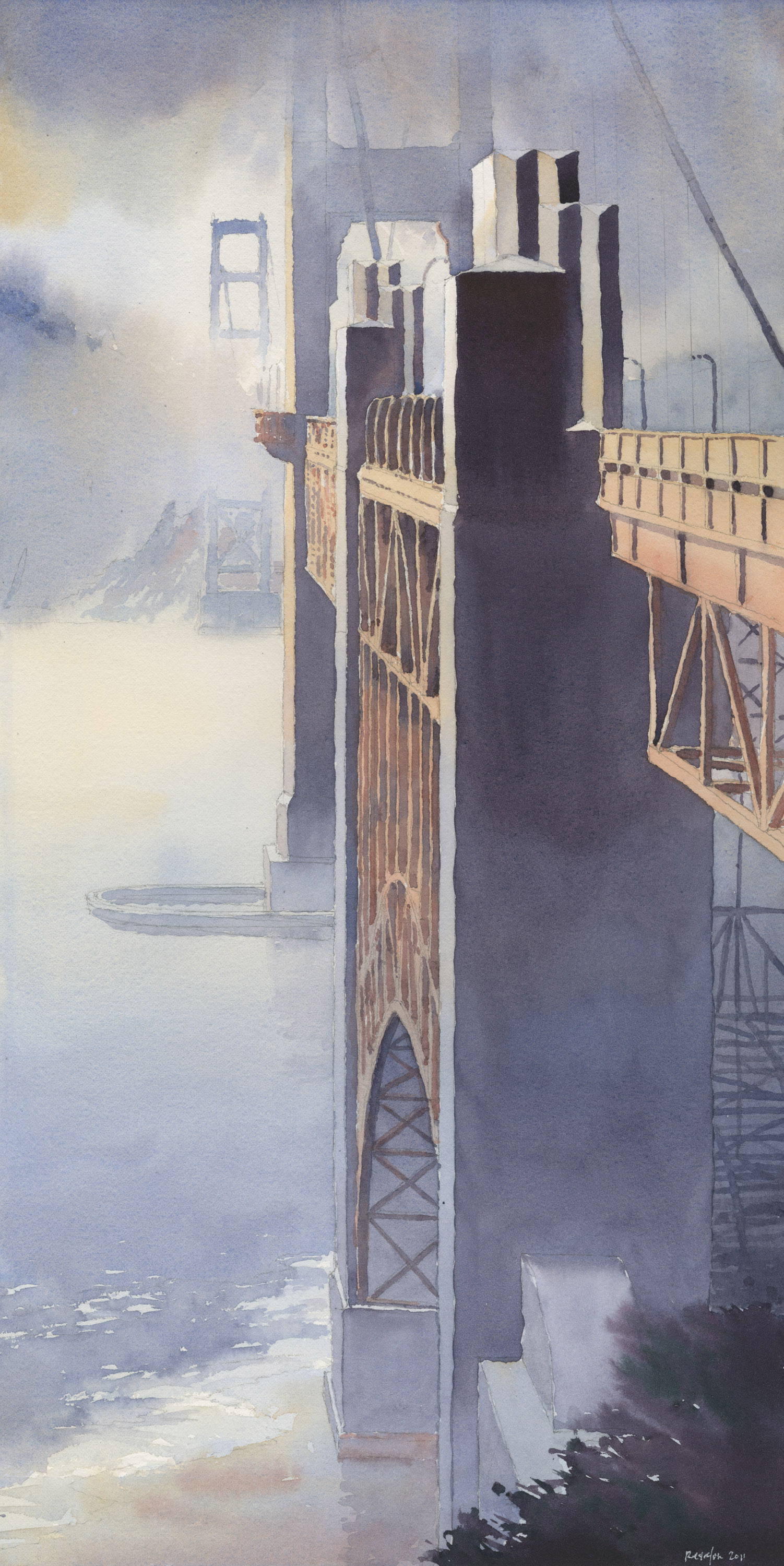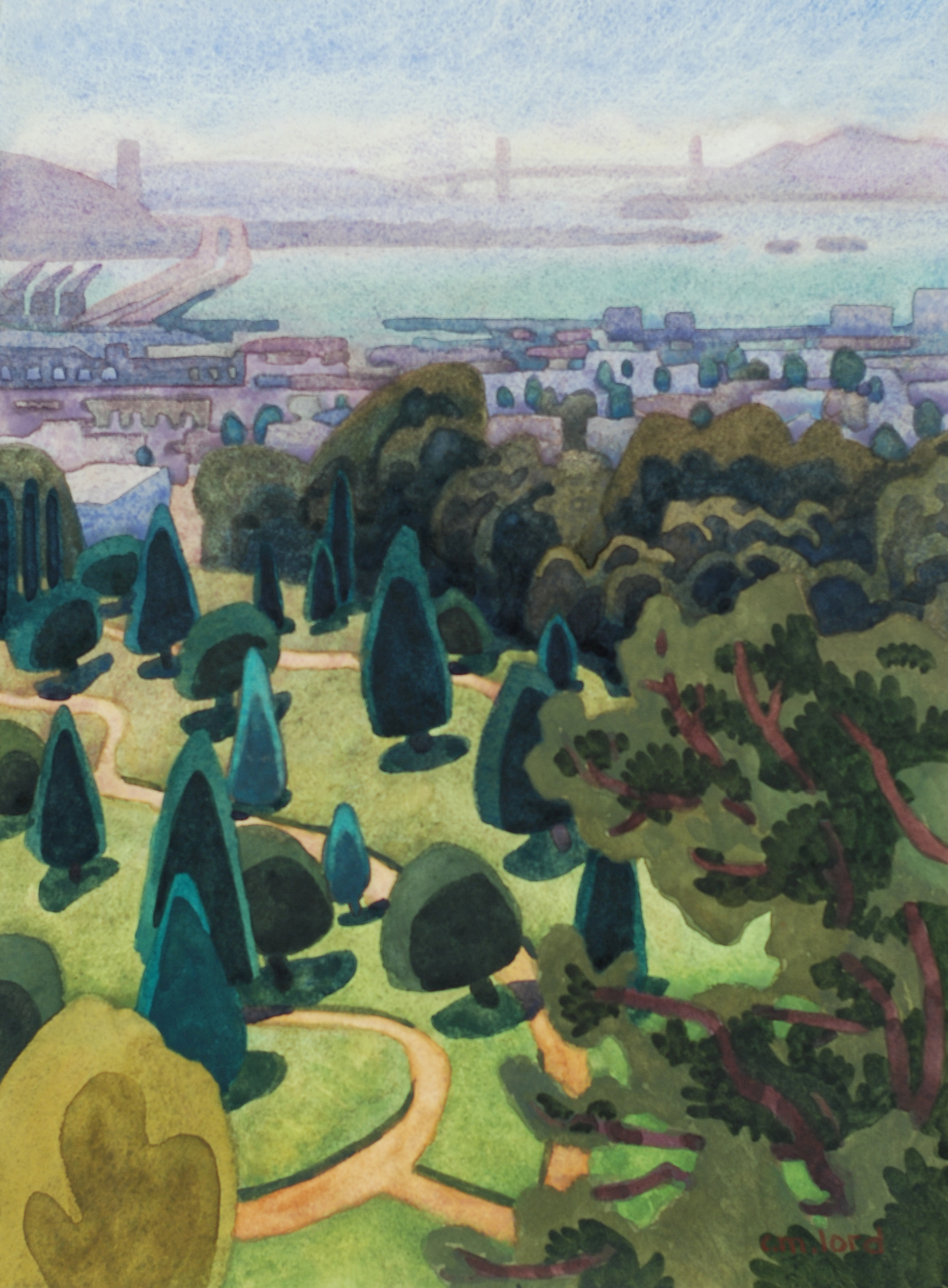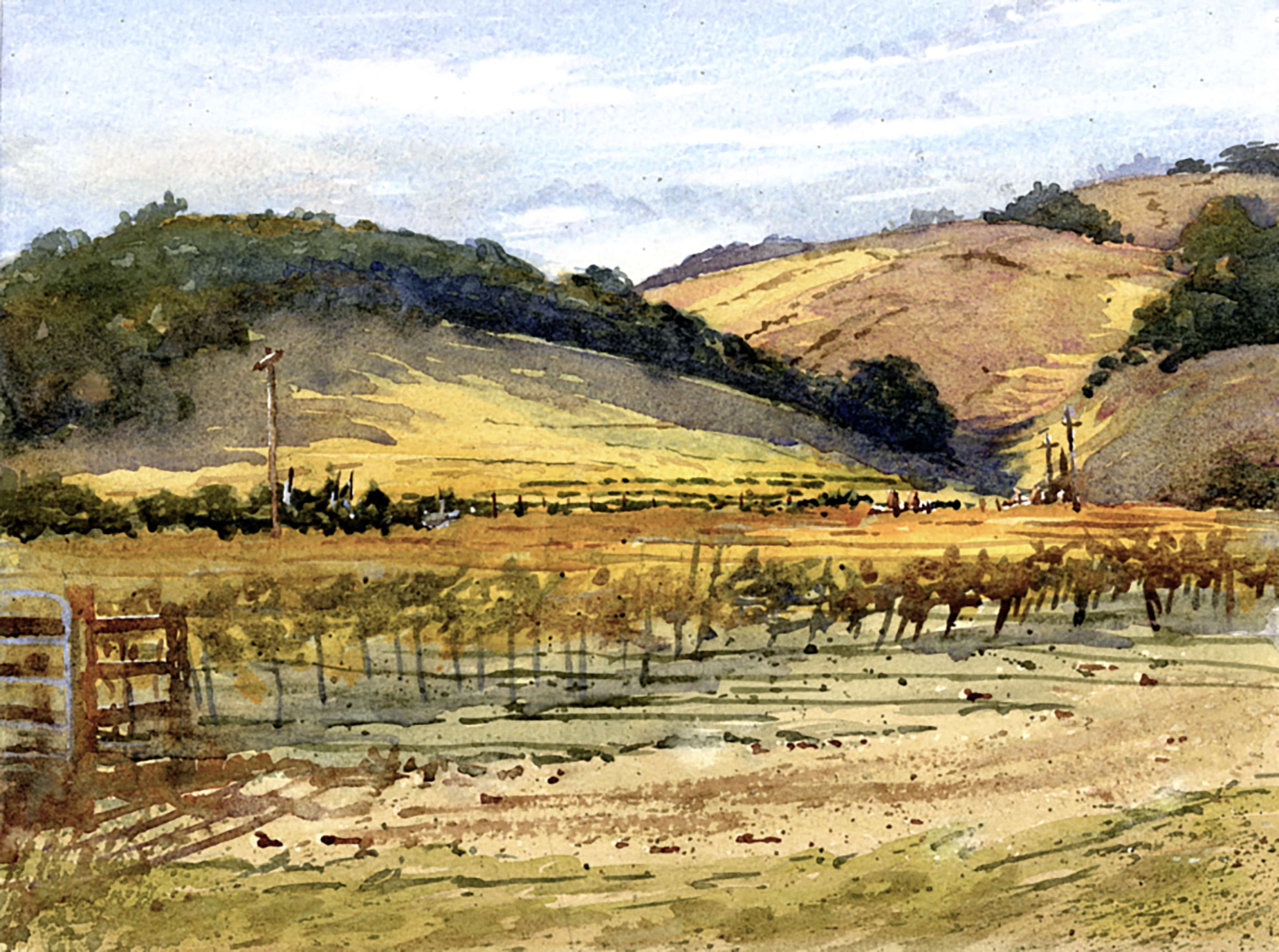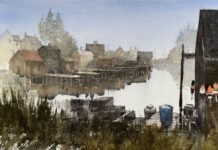
Michael Reardon
Watercolor, 22 x 11 in.
Boasting awe-inspiring redwood forests, vineyards set amid rolling hills, and a dramatic Pacific coastline, Northern California has been the backdrop for a number of significant art movements. With all of that spectacular natural scenery, it’s no wonder that two of the most popular movements have been rooted in the land, often offering a direct counterpoint to those in other parts of the country that favored a more abstract approach.
Chief among these movements, California Impressionism sprung up as artists in the Golden State embraced their French predecessors’ interest in loose brushwork, rich color, and, most of all, a fascination with the effects of sunlight. And what better way to capture the distinctive California glow than by also painting en plein air, a defining feature of 20th-century California painting.
For Irvine Museum director Jean Stern, one of the most appealing aspects of these California scenic paintings is that they don’t require an interpreter. Unlike more abstract works, “You don’t need help to know what they’re about,” he says. “The more you elevate the visual message” with representative art, “the more you have the emotional message underneath.”

Carolyn Lord
Watercolor, 15 x 11 in.
As Abstract Expressionism emerged to dominate the art scene toward the middle of the 20th century, California Impressionism gradually fell out of fashion (only to enjoy a revival in the 1970s that continues to this day). But as it goes with the yin yang of aesthetics, attention ultimately returned to Northern California when a group of artists began rejecting the tenets of the predominate movement in favor of a return to a more realistic approach. Known as The Bay Area Figurative Movement or Bay Area Figurative School, these San Francisco–based artists captured local landscapes, still lifes, and genre scenes in a fresh figurative style.
Many of the “First Generation” artists in this movement were initially proponents of Abstract Expressionism and worked in that manner for a time, including David Park, Richard Diebenkorn, Rex Ashlock, Elmer Bischoff, Glenn Wessels, Wayne Thiebaud, and James Weeks. Spanning two decades, the movement saw two other groups, or generations, adopt this style of painting, and their influence continues to be seen in the work of artists in the Bay area and beyond today.
With such a rich history in art realism and painting directly from life, San Francisco and Wine Country will make the perfect hosts for the 8th Annual Plein Air Convention & Expo, April 24-28, 2019.

David Savellano
Watercolor, 14 x 10 in.
Painting Tips From Local Artists
The light and weather conditions can change fast, so it’ s important to capture a moment fairly quickly. You also have to be aware of the late afternoon west wind. In artists’ circles here, there are many stories of tripods and canvases blowing away. — Michael Reardon
In the spring, the vines in wine country can have quite a bit of new foliage on them. I’ve found that the intense greens don’t make for a great painting if matched precisely. This is one case where painting exactly what you see might not be successful; be sure to bring your creativity. — Larry Cannon
If I’m painting along a road, I use James Guerney’s trick of bringing my own orange traffic cones to alert drivers that there’s an artist ahead. A fun observation is that orange is also the color of California Poppies, our state flower! — Carolyn LordI always bring at least a sweatshirt, often something warmer. It can get very cold in the shade, especially once the wind picks up or the fog rolls in. In the wine country it is generally warmer, but the late afternoon wind can get chilly. — Michael Reardon
It may be California but it’s N-o-r-t-h-e-r-n California and it might be warm-ish, but it’s just as likely to be cold-ish. Can be windy too, so you’re just as likely to be wind-chapped as you are sunburned. — Carolyn Lord

Larry Cannon
Watercolor, 10 x 14 in.
Perfect Places to Paint En Plein Air
I love painting at Rodeo Beach just a short distance north of the Golden Gate Bridge in the Golden Gate National Recreation Area. To the north of that is another cove at Muir Beach. Both have tall cliffs, good surf, and a mix of views. I also love painting at the Presidio, with its interesting topography, beautiful old trees, bucolic vistas, and views to the Golden Gate Bridge and Marin County beyond. — Larry Cannon
I’m drawn to North Beach and Chinatown for the variety of street scenes. I also think no artist visiting the city should go home without seeing California Street from Market Street to the top of Nob Hill. — David Savellano
There are so many great places to paint, but I would single out Fort Mason for its Golden Gate views, cypress trees, and wonderful architecture. I also recommend Tilden Park, just east of Berkeley, for views of quintessential East Bay Hills dotted with oaks and eucalyptus. — Michael Reardon
Join Joseph Zbukvic and other top watercolor artists, including Keiko Tanabe, Dan Marshall, and Shuang Li at the 2019 Plein Air Convention & Expo.







